The study, published in IVES Technical Reviews, shows vessels can modulate the aromatic profile of wines, either by affecting yeast metabolism during alcoholic fermentation or by modifying the evolution of volatile compounds during ageing.
An edited version of the report, ‘Chemical and physical implications of the use of alternative vessels to oak barrels during the production of white wines’.
Recently, the use of alternative vessels to oak barrels during winemaking has become increasingly popular, but little is known about their impact on the chemical composition of the final wines. To address this issue, a Sauvignon Blanc wine was produced using cylindrical stainless-steel tanks, egg-shape concrete vessels, egg-shape polyethylene vessels and clay jars. The wines were fermented and aged on their lees for six months and chemically characterised as described below.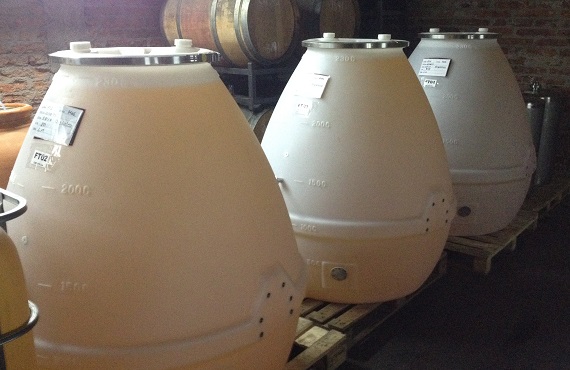
The trial
The researchers, Mariona Gil, Cristina Ubeda, V. Felipe Laurie, and Álvaro Peña-Neira, used Sauvignon Blanc grapes from Chile’s Leyda Valley for the trial. With a fruit yield of approximately 12T/ha, the grapes were hand-harvested, destemmed, crushed and pressed (at approximately 65% juice yield). Then, the juice was subjected to a 24hr settling period prior to racking into four different types of vessels (used in triplicate):
- 150L stainless-steel tanks (CYL INOX)
- 980L egg-shape polyethylene tanks (OVO PE) (above)
- 450L egg-shape concrete tanks (uncoated) (OVO CNCR)
- and 225L clay jars (uncoated) (JAR CLAY).
Details of the juice
Brix: 22.1°
TA: 6.75g/L
pH: 3.4
Yeast assimilable nitrogen (YAN): 174mg/L
The juice was inoculated with commercial starter yeasts. Once the alcoholic fermentation had finished, the wines were sulphited (200mg K2S2O5/L) and kept in the same vessels for six months on their lees. A single bâtonnage was performed halfway through élevage.
Then the wines were bottled and stored in a dark cellar until analysis (approximately two months later).
The results
Chemical composition of the resulting wines

Table 1. General analyses of wines from each kind of vessel (mean ± SD, different letters in a row indicate statistical differences (p<0.05) among vessels).
The vessels used for winemaking did not impact the alcohol, colour intensity or phenolic content of the wines (Table 1). The lack of differences in colour intensity and phenolic content was somewhat surprising, given that oxygen has been shown to permeate through polyethylene, concrete and clay, but not through stainless steel. Instead, the use of uncoated concrete or clay vessels showed a higher concentration of iron and copper in the resulting wines which could contribute to future wine oxidation.
The results for the different types of vessels clearly showed impacts on titratable acidity and pH of the resulting wines (Table 1), with egg-shape concrete vessels having the lowest titratable acidity and the highest pH. Such results could be explained by the release of inorganic compounds from concrete, such as silicon, sodium and magnesium. Moreover, it seems that concrete vessels favour the precipitation of calcium salts during winemaking, since the concrete vessel wines had the lowest calcium content.
‘These results seem to indicate that vessels can modulate the aromatic profile of wines’

Figure 1. Main classes of volatile compounds from wines fermented in different kinds of vessels.
The profiles of the volatile compounds are summarised in Figure 1, in which no differences for terpenes and alcohols can be observed. In contrast, wines from clay jars had lower ester and acid content compared to wines from stainless steel and concrete vessels. Even though wines from clay jars showed the lowest content of volatile compounds, they had lower C6 compounds content (related to herbaceous scents) and a higher amount of ethyl heptanoate (an ester related to primary aromas from grapes, a result of yeasts not synthesising compounds containing backbones with an odd number of carbon atoms). Thus, it can be hypothesised that wines from clay jars are perceived as being fruitier, although, due to their lower ester content, they could also be less aromatically intense. These results seem to indicate that vessels can modulate the aromatic profile of wines, either by affecting yeast metabolism during alcoholic fermentation or by modifying the evolution of volatile compounds during ageing. This is an interesting possibility, since such vessels could be used as alternatives to oak barrels – thus avoiding the aromatic shift resulting from contact with the wood – and widen the range of blending options.
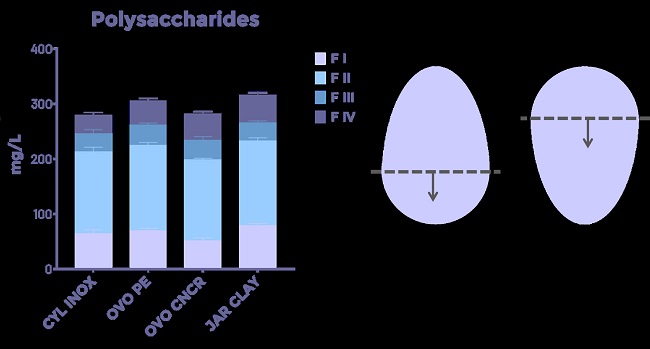
Figure 2. Polysaccharide content of wines from each kind of vessel (left) and diagram of ovoid vessels (right).
The soluble polysaccharide content of wines from different vessels are shown in Figure 2. The method used for analysing the soluble polysaccharides of wines allows them to be separated according to their molecular mass (which is based on the size of the molecule). As a result, four different fractions of polysaccharides were obtained: the largest polysaccharides (F I), intermediate-sized polysaccharides (F II), small-sized polysaccharides (F III), and oligosaccharides (comprising a few molecules of carbohydrates) (F IV). The sum of these four fractions represents the total amount of polysaccharides.
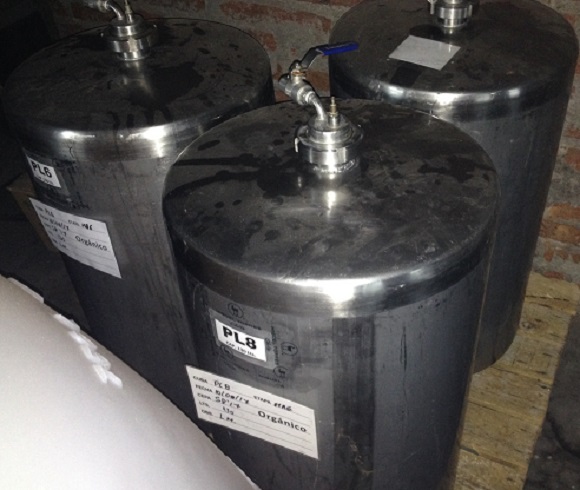
Wines from CYL INOX and OVO CNCR vessels showed lower polysaccharide content than those from JAR CLAY. Moreover, wines from CYL INOX vessels (above) showed the lowest content of oligosaccharides (F IV; accounting for polysaccharides of 2 to 5 KDa in molecular mass). In contrast, wines from JAR CLAY vessels showed the highest content of high molecular mass polysaccharides (F I; 50 to 700 KDa) and oligosaccharides (F IV). The results therefore show that clay jar wines contain more polysaccharides than CYL INOX wines, as well as OVO CNCR wines.
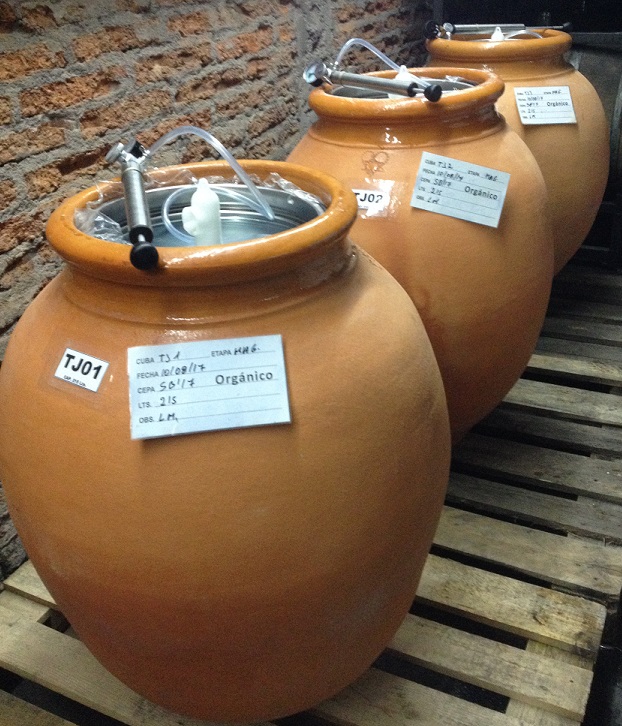
Three out of four vessels used in this trial were egg shape. The wider end of OVO PE and OVO CNCR is at the bottom, while it is at the top of JAR CLAY (above). One of the reasons put forward for using egg-shape vessels is that their shape favours the formation of convection currents inside the liquid, thus preventing suspended solids from settling at the bottom of the vessel and causing the release of yeast-derived polymeric carbohydrates into the wine. This hypothesis is supported by theoretical data, but whether the alleged convection currents effectively increase the colloidal content of wines is not easy to prove. Alternatively, the extent of the surface contact between the settled solids and wine in the round-bottomed tanks may help to explain the rise in polymeric carbohydrates.
In terms of the shape of the vessels used during this trial, it is possible to assume that, compared to egg-shape vessels, the inner walls of the jars have a larger surface area on which solids can settle (as shown in the diagram of Figure 2), and that this surface can be estimated. The proportion of settled solids surface contact with respect to the volume of wine is about 44.6 cm2/L for clay jars (corresponding to 224 L/m2) and about 34 cm2/L for concrete egg shape vessels (corresponding to 295 L/m2). Thus, it seems reasonable to have found a higher enrichment of wine polysaccharides in clay jars than in concrete egg-shape vessels (below).
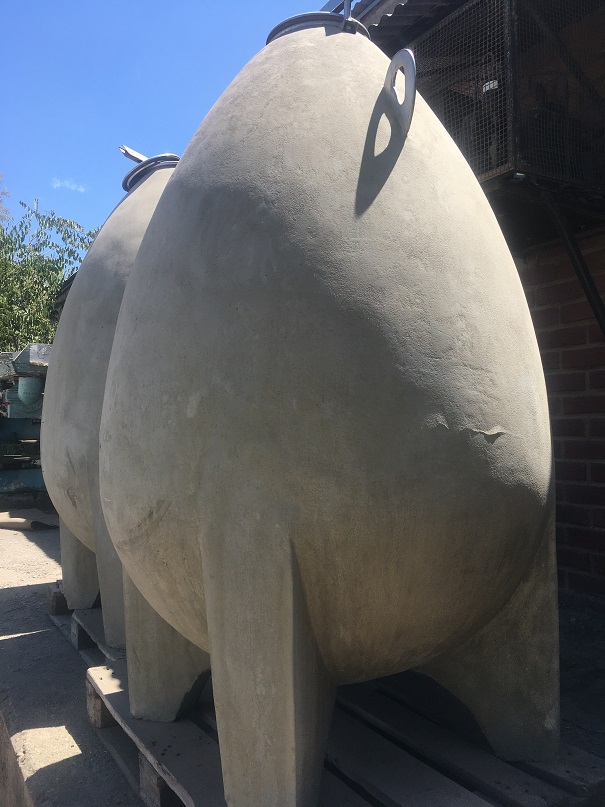
‘Selecting the right kind of vessel may help enhance or mitigate certain aromatic features of the resulting wines’
Conclusions
The results regarding volatile compounds suggest that selecting the right kind of vessel may help enhance or mitigate certain aromatic features of the resulting wines and be a good tool for upgrading typicality. Moreover, the results of this trial seem to indicate that vessel material has greater impact on the chemical composition of the resulting wines than vessel shape. Although the overall chemical differences between the wines were small, the changes produced by different kinds of vessels may offer winemakers a wider range of wine blending options, as well as a tool for upgrading typicality. However, the magnitude of the differences reported suggests that the use of different kinds of vessels could help winemakers modulate some final attributes of wine to a limited extent, the main attributes of the resulting wines depending much more on the raw grapes and winemaking practices than the type of vessel employed.


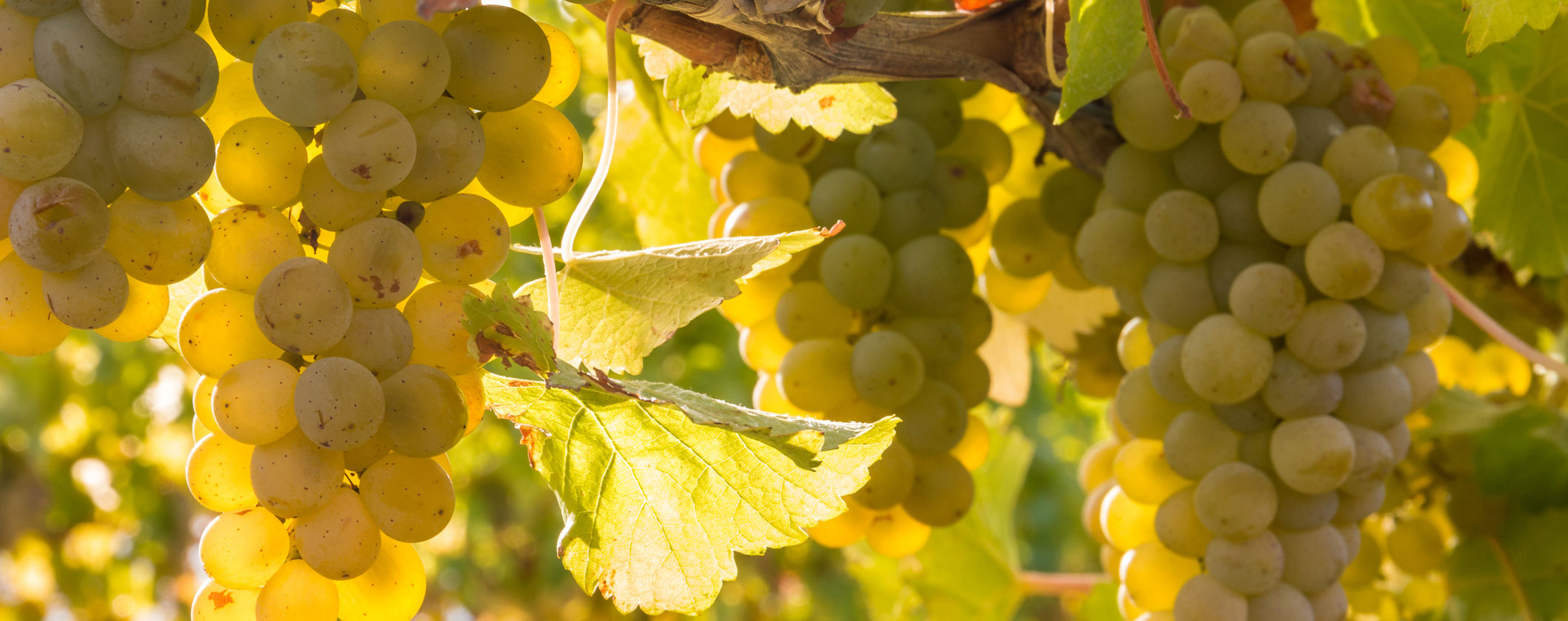










.png)






